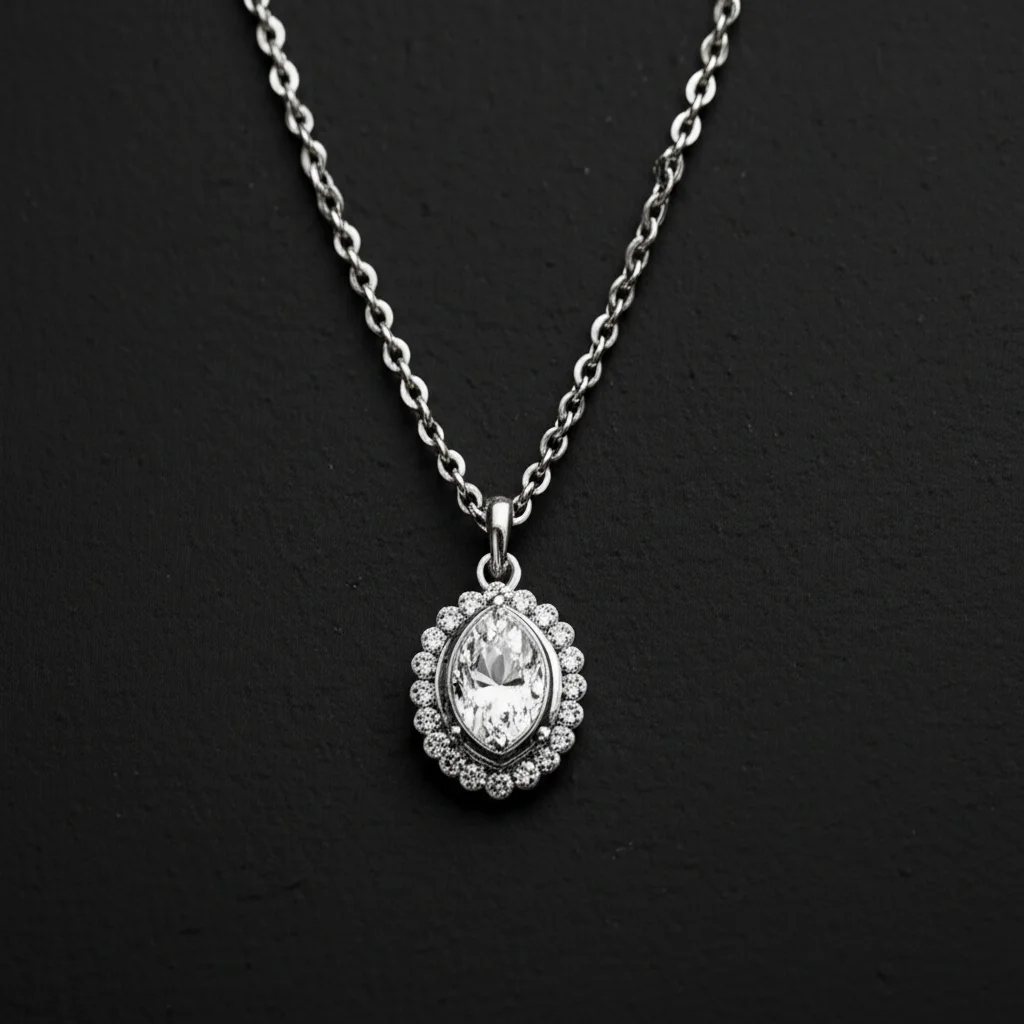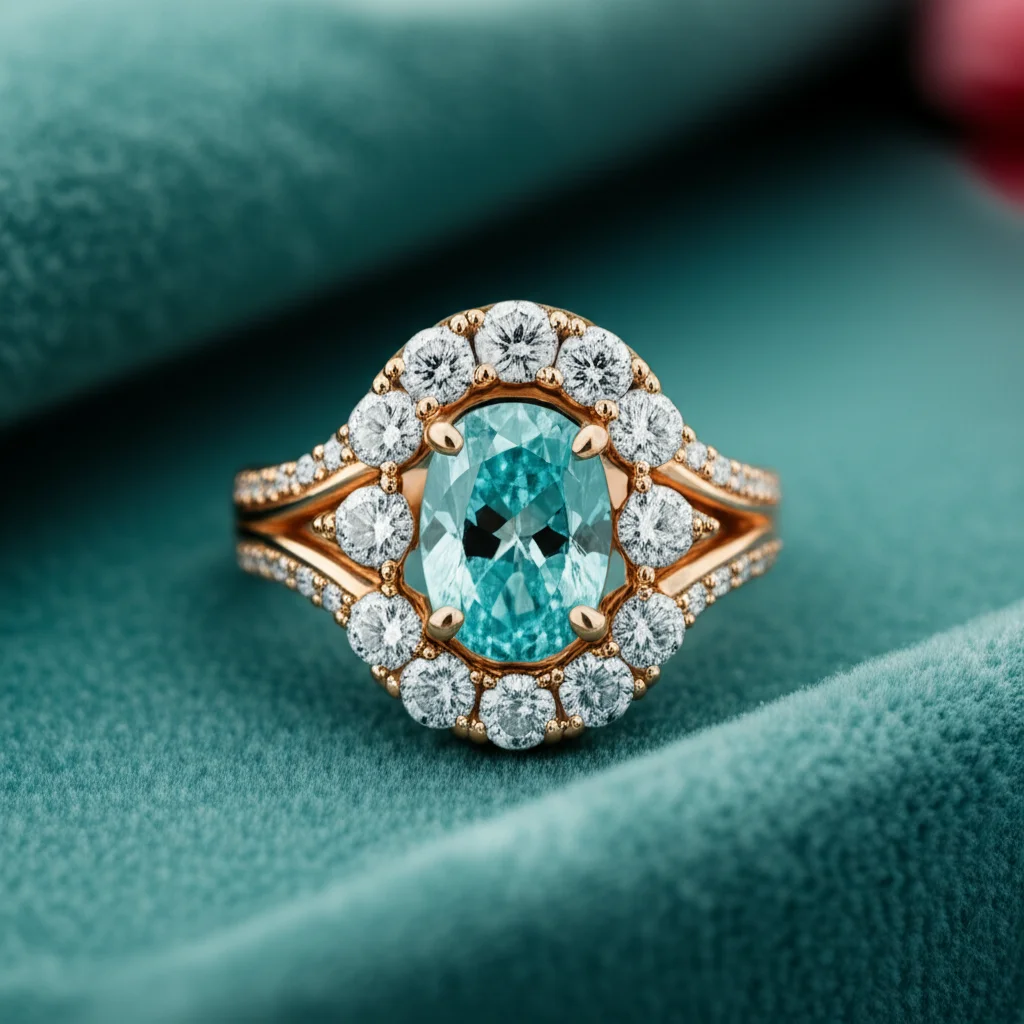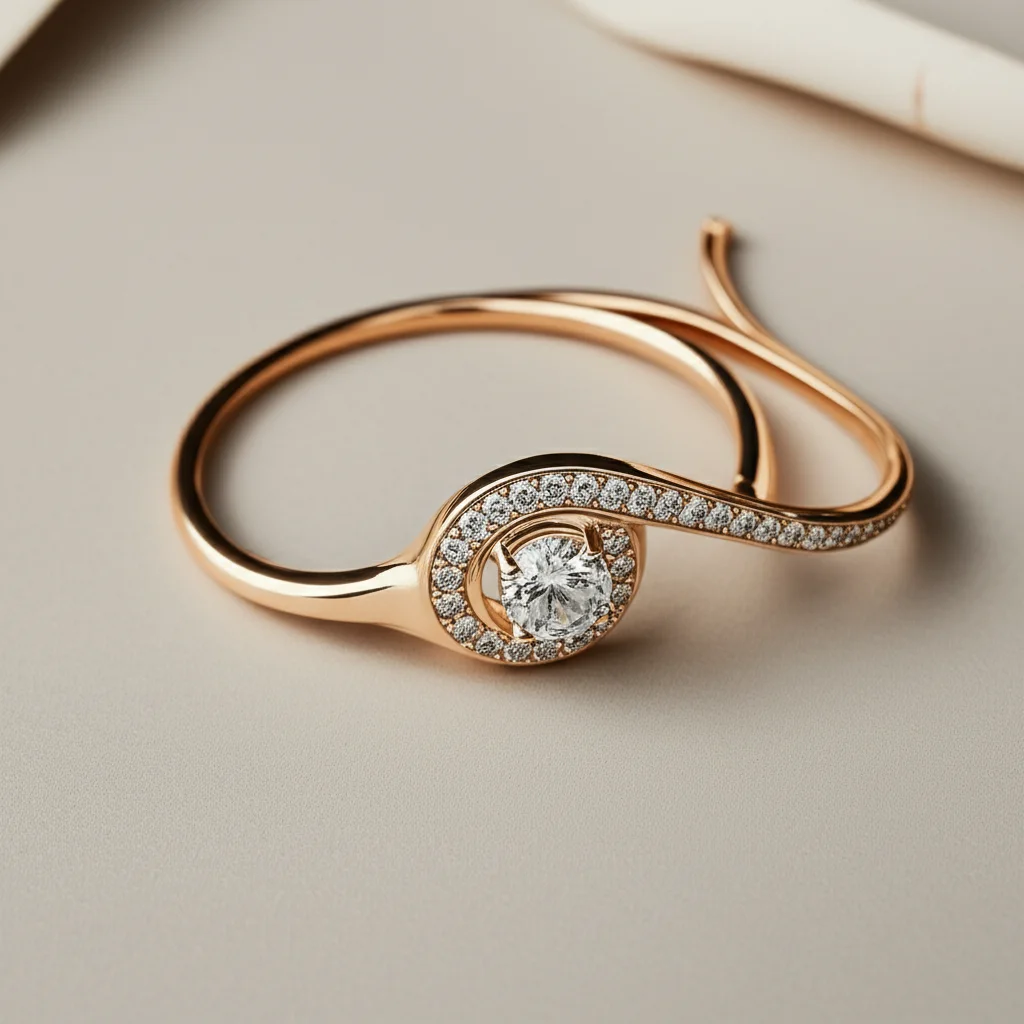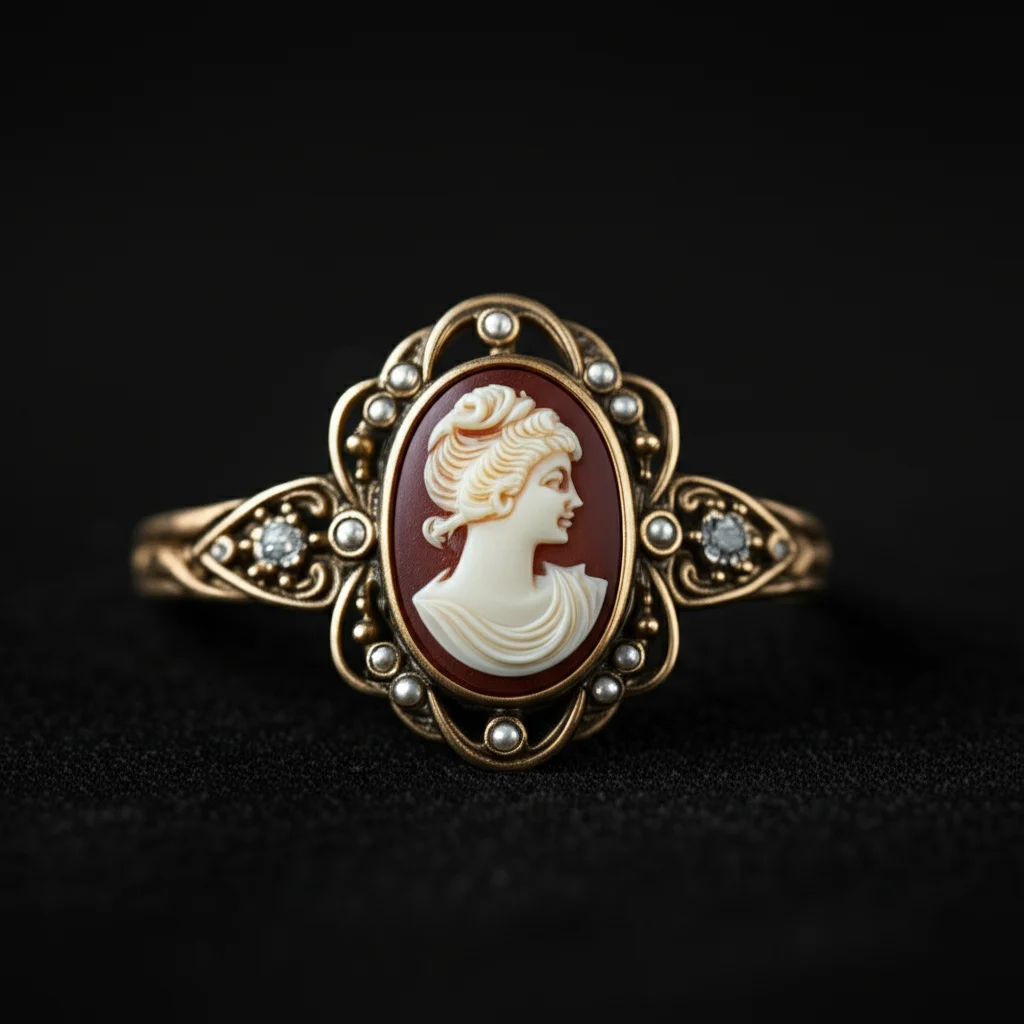· Todd Martin · Jewelry Care · 19 min read
How To Clean A Silver Necklace

Restore Sparkle: How to Clean Your Silver Necklace
Is your beloved silver necklace losing its luster? Over time, silver jewelry often develops a dull, dark layer known as tarnish. This natural process can make your once-shimmering piece look old and neglected. But do not worry; learning how to clean a silver necklace is easy. You can bring back its beautiful shine with simple items you likely already have at home.
This article provides a complete guide. We explore why silver tarnishes and offer various methods to restore its sparkle. You will learn gentle cleaning techniques for light tarnish. We also cover powerful solutions for stubborn grime. You will also discover how to protect your necklace from future tarnishing. Get ready to make your silver necklace look new again.
Takeaway: Restore Your Silver Necklace’s Shine
- Identify Tarnish Causes: Understand why your silver necklace dulls. Sulfur compounds in the air are a main reason.
- Choose the Right Method: Select a cleaning technique based on the tarnish level and necklace type. Gentle methods work for light tarnish. Stronger solutions tackle heavy buildup.
- Protect Your Pieces: Store your silver necklace properly. This helps prevent future tarnishing.
- Regular Care Matters: Clean your silver necklace routinely. This keeps it bright and reduces deep tarnish formation.
To clean a silver necklace, gently wash with mild soap and warm water, or use a baking soda paste for tougher tarnish. For heavily oxidized pieces, an aluminum foil and baking soda bath can restore shine. Always dry thoroughly and store properly to prevent future tarnishing.
Understanding Silver Tarnish: Why Your Necklace Loses Its Shine
Silver tarnish is a common problem for anyone who owns silver jewelry. It is a natural chemical process. Tarnish appears as a black or dark brown discoloration on the silver surface. It makes your beautiful necklace look dull. Understanding why this happens helps you clean and protect your silver effectively.
Silver reacts with certain substances in the air. This reaction creates a new compound. This compound is silver sulfide. Sulfur is a primary culprit. It is present in the air around us. It is also in many household items. When silver comes into contact with sulfur, tarnishing begins. This process is slow but steady.
What Causes Tarnish?
Several factors speed up tarnishing. Humidity is one factor. Moist air contains more reactive compounds. These compounds cause quicker tarnishing. High pollution levels also contribute. Polluted air often has more sulfur. Certain chemicals can also accelerate the process.
Common household items can cause tarnish. Rubber bands contain sulfur. Leaving silver near them is not good. Wool and felt also have sulfur. Store your silver away from these materials. Some foods contain sulfur too. Eggs and onions are examples. Avoid wearing silver while handling these foods.
Your body chemistry plays a role. Sweat contains chemicals that can tarnish silver. Lotions and perfumes are also culprits. These products can leave a residue. This residue reacts with silver. It speeds up the tarnishing process. Always put your silver necklace on last. Take it off first when you get home.
Types of Silver and Tarnish
Most silver necklaces are sterling silver. Sterling silver is 92.5% pure silver. The remaining 7.5% is usually copper. Copper makes silver stronger. Pure silver is too soft for jewelry. However, copper also makes sterling silver more prone to tarnish. Copper reacts more readily with sulfur.
Pure silver tarnishes much slower. It is rarely used for necklaces alone. Silver-plated jewelry has a thin layer of silver over a base metal. This layer can tarnish. Once the plating wears off, the base metal shows through. Cleaning methods for plated silver need to be very gentle. Strong chemicals can strip the plating. Learning how to clean 925 silver jewelry is helpful. This is because 925 refers to sterling silver.
Oxidized silver is different. This silver has been intentionally darkened. Jewelers use a chemical process to achieve this look. It creates a dark patina. This patina often highlights design details. You should not try to remove this dark layer. Cleaning oxidized silver requires special care. Aggressive cleaning will remove the desired finish. Learn how to clean oxidized silver to protect this unique look.
Understanding these causes helps you. You can take better care of your silver necklace. Proper cleaning and storage prevent most tarnish. Your necklace will stay shiny for a long time.
Gentle Cleaning Methods for Lightly Tarnished Silver
Your silver necklace does not always need strong chemicals. For light tarnish or routine cleaning, gentle methods work best. These approaches are safe. They protect the delicate finish of your jewelry. Regular gentle cleaning prevents heavy tarnish buildup. This keeps your necklace sparkling effortlessly.
Soap and Warm Water Method
This is the simplest way to clean your silver necklace. It is also the safest. You only need mild dish soap. Do not use harsh detergents. Harsh detergents can damage silver. Warm water helps lift dirt and oils. This method is great for everyday grime. It also works well for removing skin oils.
Here is how to clean your silver necklace with soap and water:
- Prepare the solution: Get a small bowl. Fill it with warm, not hot, water. Add a few drops of mild dish soap. Mix it gently until suds appear.
- Soak the necklace: Place your silver necklace into the soapy water. Let it soak for 5 to 10 minutes. This softens any dirt or light tarnish.
- Gently clean: Take out the necklace. Use a soft cloth or a soft-bristled toothbrush. Gently rub the necklace. Pay attention to crevices. The toothbrush helps reach small areas. You can also learn how to clean a necklace in general this way.
- Rinse thoroughly: Hold the necklace under cool, running water. Make sure to rinse off all soap residue. Soap can leave a film if not fully rinsed.
- Dry completely: Use a clean, soft cloth to dry the necklace. A microfiber cloth works best. Ensure it is completely dry. Moisture encourages tarnish. Do not let it air dry.
This method is especially good for necklaces with stones. Many stones can be damaged by harsh chemicals. Pearls and opals are very delicate. This gentle approach protects them. If you have a silver necklace with stones, this is your go-to method. If you also have silver rings, you can use this for how to clean silver rings with stones.
Microfiber Cloth Polishing
Sometimes, a simple polish is all your necklace needs. A specialized silver polishing cloth works wonders. These cloths often contain a mild polishing agent. They are effective for removing very light tarnish. They also restore shine. This is a quick fix. It is great for daily maintenance.
How to use a polishing cloth:
- Rub gently: Take your silver necklace. Use the polishing cloth to rub the tarnished areas. Apply gentle pressure.
- Work in sections: Focus on one small section at a time. This ensures you cover the entire necklace.
- Buff to a shine: Continue rubbing until the tarnish disappears. The cloth will turn dark. This shows it is working. Then buff the entire piece. This brings out the full shine.
Polishing cloths are convenient. You can keep one handy. Use it every few wears. This keeps tarnish from building up. It maintains your necklace’s sparkle between deeper cleanings. This gentle method is non-abrasive. It is safe for all types of silver necklaces.
Baking Soda and Aluminum Foil: A Powerful Tarnish Remover
When your silver necklace has stubborn tarnish, you need a stronger solution. The baking soda and aluminum foil method is very effective. It uses a chemical reaction to reverse the tarnishing process. This method is often called the “ionic cleaning” method. It works without abrasive rubbing. This makes it safer for intricate designs.
This method is particularly good for how to clean heavily tarnished silver that has lost its shine completely. It helps to remove the dark silver sulfide layer. The process is simple. It uses common household items. You likely have them in your kitchen.
How the Method Works
The magic happens through an electrochemical reaction. Aluminum is more reactive than silver. When both are in a hot, salty baking soda solution, a current is created. The sulfur ions on the silver transfer to the aluminum. This effectively “pulls” the tarnish off the silver. The tarnish does not get rubbed off. It gets converted back into silver metal. This restores the shine.
Step-by-Step Guide for Using Baking Soda and Foil
Gather your materials first. You will need a heat-safe bowl, aluminum foil, baking soda, salt, and very hot water. Make sure your bowl is clean. A glass or ceramic bowl works well.
- Line the bowl with foil: Take a sheet of aluminum foil. Line the bottom and sides of your bowl with it. Ensure the shiny side faces up. This is important for the chemical reaction.
- Add ingredients: Place your tarnished silver necklace directly on the foil. Make sure it touches the foil. Sprinkle a generous amount of baking soda over the necklace. About 1-2 tablespoons is usually enough for a necklace. Add a pinch of salt too. Salt helps conduct the current. If you specifically want to know how to clean silver necklace with baking soda, this method is key.
- Pour hot water: Carefully pour very hot water into the bowl. Make sure the necklace is fully submerged. You should see a fizzing or bubbling reaction. This is normal. It shows the reaction is starting. The water must be hot for the reaction to be strong.
- Let it soak: Let the necklace soak for 5 to 10 minutes. For heavily tarnished items, you might need up to 15 minutes. Watch as the tarnish disappears. You might see flakes of tarnish floating off. The foil may also turn dark. This means the tarnish is transferring. This is also how to clean silver jewelry with aluminum foil, a common query.
- Remove and rinse: Use tongs or a spoon to carefully remove the necklace from the hot water. The necklace will be hot. Rinse the necklace thoroughly under cool, running water. Ensure all baking soda residue is gone.
- Dry and buff: Dry the necklace completely with a soft, clean cloth. Buff it gently to bring out its full luster. Your silver necklace should now look much brighter.
Important Warnings
- Not for all stones: This method is generally safe for most solid silver necklaces. However, be careful with porous stones. Pearls, opals, and turquoise can be damaged by hot water or the chemicals. Always check stone compatibility first.
- Antique finishes: Do not use this method on intentionally oxidized silver. It will remove the desired dark patina. This will ruin the antique look.
- Patina: If your necklace has a natural, aged patina you wish to preserve, avoid this method. It removes all tarnish, including desirable aging.
This baking soda and aluminum foil method is a powerful tool. It restores even the most tarnished silver necklaces. Use it when gentle cleaning is not enough.
Other Effective Home Remedies for Cleaning Silver Necklaces
Beyond soap and water or the foil method, several other household items can clean your silver necklace. These remedies use mild abrasives or acidic properties. They can be effective for various levels of tarnish. Always proceed with caution. Test a small, hidden area first. This ensures the method is safe for your specific necklace.
Toothpaste Method
Toothpaste is a common household item often recommended for cleaning silver. It contains mild abrasives. These abrasives can gently scrub away tarnish. This method is best for small tarnished areas. It is not ideal for intricate chains or pieces with many crevices.
How to use toothpaste:
- Choose the right toothpaste: Use a plain white toothpaste. Avoid gel toothpastes. Do not use toothpastes with whitening agents or micro-beads. These can be too abrasive. They can scratch your silver. Many people ask how to clean sterling silver with toothpaste, and this is the key.
- Apply a small amount: Squeeze a tiny dab of toothpaste onto a soft cloth or your finger.
- Rub gently: Apply the toothpaste to the tarnished area of your silver necklace. Rub gently in small circles. Avoid harsh scrubbing.
- Rinse thoroughly: Rinse the necklace completely under cool, running water. Ensure all toothpaste residue is gone. Remaining toothpaste can cause new tarnish.
- Dry completely: Dry the necklace immediately with a soft, clean cloth.
Warning: Use this method sparingly. The abrasives, even mild ones, can wear down the silver over time. It can also scratch delicate finishes. It is not recommended for silver-plated items. The plating is very thin and can be rubbed away.
Lemon Juice and Salt
Lemon juice is a natural acid. Salt acts as a mild abrasive. Together, they form a simple but effective cleaning solution. This method is good for moderate tarnish. It brightens the silver without harsh chemicals.
Steps to use lemon juice and salt:
- Create the paste: Squeeze fresh lemon juice into a small bowl. Add a teaspoon of fine salt. Mix until a paste forms.
- Apply and rub: Apply the paste to your silver necklace with a soft cloth. Gently rub the tarnished areas.
- Soak (optional): For stubborn tarnish, you can let the necklace sit in the paste for 5-10 minutes.
- Rinse and dry: Rinse the necklace very well under cool water. Dry it thoroughly with a soft cloth. This is a common way for how to clean silver jewlery with salt.
Warning: The acidic nature of lemon juice can be risky for some stones. Avoid using this on pearls, opals, or other porous gems. Always rinse very well to prevent acidic residue.
Vinegar and Baking Soda
This combination creates a fizzing reaction. This reaction helps lift tarnish. It is similar to the aluminum foil method in principle but less intense. Vinegar provides the acid. Baking soda is a mild abrasive and helps with the reaction.
How to use vinegar and baking soda:
- Mix the solution: In a small bowl, combine ½ cup white vinegar and 2 tablespoons of baking soda. The mixture will fizz.
- Soak the necklace: Once the fizzing calms, place your silver necklace into the solution. Let it soak for 2-3 hours. For heavier tarnish, overnight might be needed.
- Rinse and dry: Remove the necklace. Rinse it thoroughly under cool water. Dry it completely with a soft cloth.
Warning: This method is generally safe for solid silver. Again, be cautious with delicate or porous stones. The long soaking time can affect some gems. Always ensure thorough rinsing. Any lingering vinegar can be corrosive over time.
These home remedies offer flexibility. They let you clean your silver necklace with items you already own. Always consider the type of silver and any stones present before choosing a method. Gentle care protects your valuable jewelry.
Special Considerations for Necklaces with Stones or Plating
Cleaning a silver necklace is not always a one-size-fits-all process. The presence of gemstones or a silver-plated finish changes things. You need to adjust your cleaning method. Harsh chemicals or abrasive techniques can damage these delicate components. Knowing what to avoid is crucial for preserving your necklace’s beauty and value.
Delicate Gemstones
Many silver necklaces feature beautiful gemstones. Some stones are very sensitive to heat, water, or chemicals. These include:
- Pearls: Pearls are organic. They are very porous. They can be damaged by acids, ammonia, and even prolonged water exposure. Harsh chemicals strip their luster. Hot water can cause them to crack. Always use very mild soap and cool water for pearls. Do not soak them. Gentle wiping is best. If you specifically need to know how to clean pearls necklace, stick to simple, quick wipe-downs.
- Opals: Opals are hydrous silica. They contain water. Extreme changes in temperature can cause them to crack. Chemicals can also damage their internal structure. Clean opals with a soft, damp cloth only. Avoid soaking.
- Turquoise: Turquoise is also porous. It can absorb oils, chemicals, and even sweat. This can change its color. Avoid strong chemicals or prolonged soaking. Use mild soap and water. Dry quickly. Many also look for how to clean silver turquoise jewelry, and gentle handling is paramount.
- Emeralds and Peridots: These stones can be sensitive to sudden temperature changes and harsh detergents. Clean them gently with mild soap and water.
For necklaces with any of these delicate stones, avoid:
- The aluminum foil and baking soda method: The hot water and chemical reaction can harm porous gems.
- Acidic cleaners: Lemon juice or vinegar can etch or discolor soft stones.
- Abrasive cleaners: Toothpaste or coarse cloths can scratch stone surfaces.
- Ultrasonic cleaners: The vibrations can loosen stones. They can also damage fragile gems.
Always use the mildest method possible for jewelry with delicate stones. A soft, damp cloth or a quick wash with mild soap and cool water is usually sufficient.
Silver-Plated Necklaces
Silver-plated necklaces have a thin layer of pure silver. This layer is applied over a base metal, like copper or brass. This makes them more affordable. However, the silver layer is very delicate. It can wear off easily.
When cleaning silver-plated items:
- Be extremely gentle: Avoid abrasive scrubbing. This can quickly remove the silver plating. Do not use toothpaste. Do not use rough cloths.
- Avoid harsh chemicals: Strong cleaning solutions can corrode the base metal beneath the plating. This can cause discoloration.
- Use mild soap and water: This is the safest method. Wash gently with a soft cloth. Rinse quickly. Dry thoroughly.
- Limit soaking time: Do not soak plated jewelry for long periods. Water can seep under the plating and cause damage.
- No polishing cloths with abrasives: Some polishing cloths have mild abrasives. These can strip the plating. Use a plain microfiber cloth. Learning how to clean silver-plated silverware gives similar advice: prioritize gentleness.
Once the silver plating wears off, you cannot restore it at home. It exposes the underlying base metal. This base metal might tarnish or even rust. Professional re-plating is the only solution.
Antique Silver and Patina
Some silver necklaces are antique. They may have an intentional dark patina. This patina gives them character. It highlights the intricate designs. This is not tarnish you want to remove. Cleaning these pieces requires extra care.
- Preserve the patina: Avoid any method that removes tarnish completely. The aluminum foil method will strip the patina. Abrasive cleaners will also remove it.
- Dust and light clean: Use a soft, dry cloth to dust the necklace. If it needs cleaning, use a very mild soap and water solution. Use a cotton swab to clean raised areas only. Do not rub the recessed, darkened areas.
- Consult a professional: For valuable antique pieces, consider professional cleaning. A conservator can clean without damaging the patina. They understand how to clean antique silver properly.
Always identify the type of silver and any stones on your necklace. This helps you choose the safest and most effective cleaning method. Careful consideration ensures your silver necklace remains beautiful for years.
Preventing Tarnish: Keeping Your Silver Necklace Sparkling Longer
Cleaning your silver necklace is important. But prevention is even better. You can significantly reduce how often your silver necklace tarnishes. Proper storage and conscious wearing habits make a big difference. These simple steps keep your silver necklace looking brighter for a longer time. They save you time and effort on cleaning.
Proper Storage Techniques
How you store your silver necklace greatly affects tarnishing. Air and moisture are silver’s biggest enemies. They contain sulfur compounds. These compounds cause tarnish. Proper storage minimizes exposure.
- Airtight Bags: Store your silver necklace in individual airtight bags. Small Ziploc bags are perfect. Squeeze out as much air as possible before sealing. This creates a barrier against air and humidity.
- Anti-Tarnish Strips: Place anti-tarnish strips inside the airtight bags. These strips absorb sulfur compounds. They protect your silver even further. They are readily available online or at jewelry stores.
- Cool, Dry Place: Keep your jewelry box or storage bags in a cool, dry place. Avoid humid areas like bathrooms. High humidity accelerates tarnishing. Basements or attics are also not ideal.
- Separate Storage: Store each silver necklace separately. Do not let silver pieces touch each other. This prevents scratches. It also stops tarnish from transferring between pieces. Use individual pouches or compartments in a jewelry box.
Smart Wearing Habits
What you do while wearing your silver necklace matters. Certain activities and products can speed up tarnishing. Be mindful of these.
- Last On, First Off: Put your silver necklace on after applying all cosmetics. This includes lotions, perfumes, and hairspray. These products contain chemicals. They can react with silver. Take your necklace off before showering, swimming, or exercising.
- Avoid Water: Do not wear your silver necklace in the shower or swimming pool. Chlorine in pools is very harsh. Saltwater is also damaging. Tap water can also contain minerals that cause tarnish. Remove your necklace before washing dishes.
- Sweat and pH: Your skin’s natural oils and sweat can tarnish silver. Some people have more acidic skin. This causes faster tarnishing. Wipe down your necklace after each wear. Use a soft cloth. This removes oils and residues.
- Chemical Exposure: Avoid wearing your silver necklace when cleaning. Household cleaners contain strong chemicals. These chemicals are very corrosive to silver. Do not wear it when handling bleach or ammonia.
Regular Gentle Cleaning
Even with perfect prevention, some tarnish might still occur. Silver is reactive. Regular, gentle cleaning helps.
- Wipe After Each Wear: Use a soft polishing cloth. Give your silver necklace a quick wipe after each time you wear it. This removes skin oils and minor tarnish before it builds up.
- Periodic Deeper Clean: Depending on how often you wear it, aim for a deeper clean every few months. Use one of the gentle methods discussed earlier. This proactive approach prevents heavy tarnish. This keeps your necklace consistently bright. This helps you understand how to clean sterling silver jewelry remove tarnish over the long term.
By following these prevention tips, you will keep your silver necklace looking brilliant. You will enjoy its sparkle for many years to come. Protecting your jewelry is as important as cleaning it.
Frequently Asked Questions About Cleaning Silver Necklaces
Cleaning silver necklaces brings up common questions. Here are answers to some of the most frequent queries. These answers help you care for your precious jewelry with confidence.
Can I clean a silver necklace with toothpaste?
You can clean a silver necklace with plain white toothpaste. It acts as a mild abrasive. Apply a small amount to a soft cloth. Rub gently on tarnished areas. Rinse thoroughly and dry completely. Avoid gel, whitening, or micro-bead toothpastes. Use this method sparingly, as it can be abrasive over time.
How often should I clean my silver necklace?
The frequency depends on how often you wear it and how quickly it tarnishes. For frequently worn necklaces, a quick wipe with a polishing cloth after each wear is good. A deeper clean using a soap and water solution or baking soda method every few months is ideal. Store it properly to reduce cleaning frequency.
Is it safe to clean a silver necklace with stones using these methods?
Many cleaning methods are not safe for all stones. For delicate or porous stones like pearls, opals, or turquoise, use only mild soap and cool water, and





